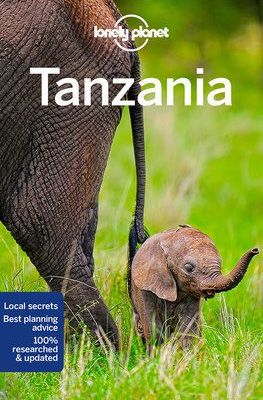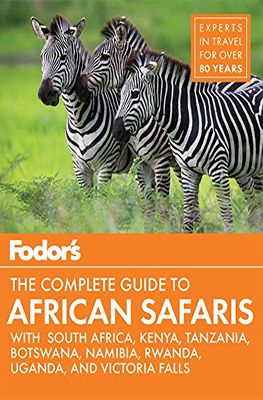As far as we are concerned, an African safari belongs on everyone’s bucket list! In South Africa we visited parks like Addo Elephant, Hluhluwe Imfolozi and Kruger Park before. These are all great nature parks to see the wildlife up close. Our recent visit to Tanzania’s wildlife parks, however, exceeded all our expectations! Because there are quite a few national parks and game reserves in the country, we have listed what we think are the most beautiful parks in this blog for you.
Top 5 best safari parks in Tanzania
The safari parks in Tanzania that are easily accessible and accessible can roughly be divided into two categories:
- the parks in the north, such as the Manyara, Ngorongoro, Serengeti and Tarangire;
- the parks in the south, including Mikumi, Ruaha and Selous.
In the parks in the north you will find a lot more tourists than in the parks in the south. The parks are also more expensive than in the south. But a visit to the Serengeti should definitely not be missing from your safari in Tanzania! And if you are in the north, then a visit to nearby Ngorongoro or Tarangire is definitely worth it.
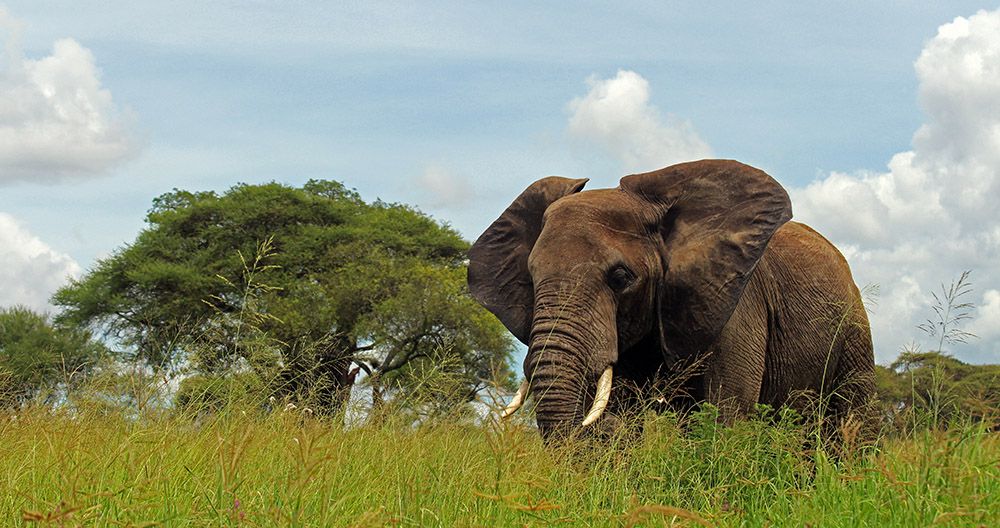
The Serengeti
The Serengeti, which literally means endless plains, is a fantastically beautiful area of savannahs and forest landscapes of approximately 30,000 km². Eighty percent of this lies in Tanzania, the rest in Kenya. In the Tanzanian part of the Serengeti are the Serengeti National Park, the Maswa Game Reserve and the Ngorongoro Crater.
The Serengeti National Park is 15,000 km². The park is not only Tanzania’s oldest natural park, but also one of the most famous parks in all of Africa. This is mainly due to the migration of over a million wildebeests (wildebeests), zebras and companions who try to cross the Mara River every year in October. The Serengeti is on the UNESCO world heritage list.
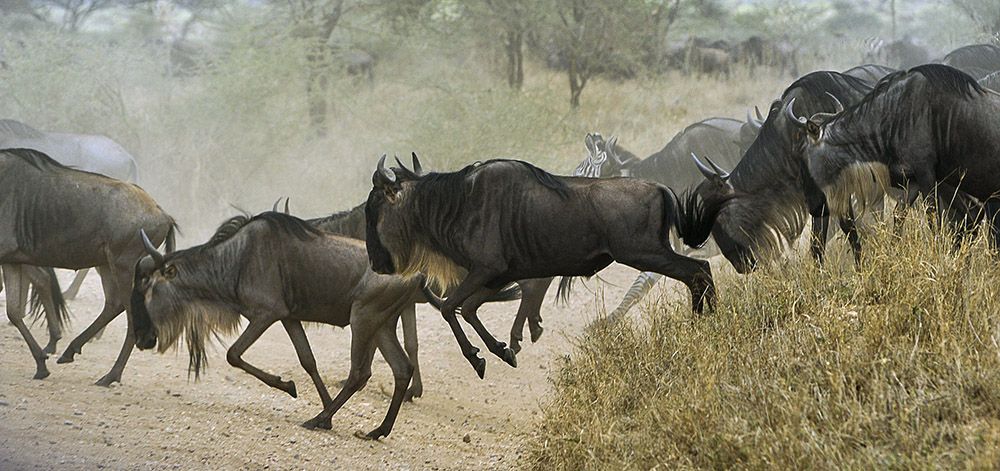
Highlights of the Serengeti
The migration of the wildebeest
The main highlight of the Serengeti National Park is undoubtedly the aforementioned migration of the approximately 1.5 million wildebeest. The migration starts in the months January to March with the birth of half a million calves. The natural spectacle is a feast for the eyes of every nature lover. If only for the lions and hyenas who like to feast on the young calves.
As soon as the dry season arrives in May, the herd travels accompanied by gazelles and zebras to the Masai Mara (Maasai Mara) in the north. This migration is not without risk as several rivers have to be crossed, including the Grumeti, where they are awaited by hungry crocodiles. By the way, especially the crossing of the Mara is a bloody scene where many a documentary maker has made history.
At the beginning of the (light) rainy season the herd retreats in the direction of the Serengeti National Park. At that moment the circle is complete again.
General highlights
What makes the Serengeti National Park so special next to the large migration are the many predators. Under the watchful eye of tourists, they seem to hunt their prey constantly. Think of lions, cheetahs, leopards and more. Sometimes you can even see a leopard taking its prey into the tree.
In addition to the predators, wildebeests, warthogs, waterbucks, gazelles and zebras, you will also find elephants, giraffes, hippos and buffaloes in the Serengeti. But the Serengeti has more to offer than just large mammals. There are also lizards, cliff-ties and 100 species of dung beetles. In addition, there are more than 500 species of birds, ranging from ostriches and the secretary bird to black eagles.
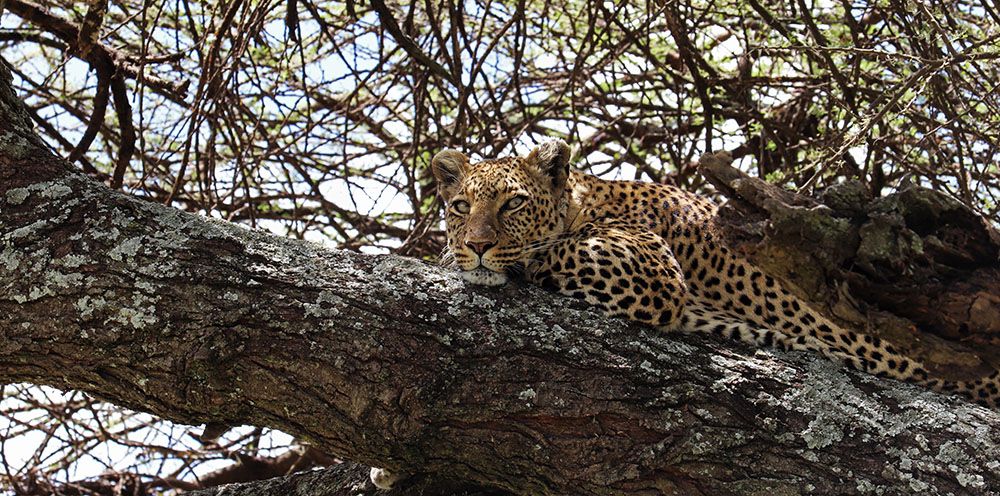
Practical things for a safari in the Serengeti
Best time to visit the Serengeti
Thanks to the large migration, there is actually always something going on in the Serengeti throughout the year. As in the other game reserves of Tanzania, the dry period from June to October is the best time to visit the park.
If you want to experience the crossing of the Grumeti River, you have to be there in the months of June and July. September is the month for the crossing of the Mara river. If you want to see the hunting of the lions for the calves of the wildebeest, you have to visit the park in February.
Safaris
We wanted to make a self-drive through the Serengeti ourselves, but this turned out to be almost impractical or even impossible. Not every random 4WD is enough and besides that you definitely need a driver who is your guide right away. The Serengeti National Park is so big that you don’t have to drive there and return the same day to your stay outside the park. Booking accommodation in the park separately is a costly affair. For this reason, we would advise you to just book an all-inclusive safari.
Depending on how deep you want to go into the Serengeti, there are many options for an organized safari. Depending on how much time you have at your disposal and which phase of the big migration you would like to experience, you could choose to do the Serengeti alone. Or to do the Serengeti in combination with Tarangire and Ngorongoro.
On the website of safaribookings.com, the world’s largest online provider of safaris in Africa, you will find hundreds of often competitively priced tours. You can also specify your personal preferences on the site, such as the degree of luxury, whether you want to stay in a hotel or glamping, private or in a group, etc.
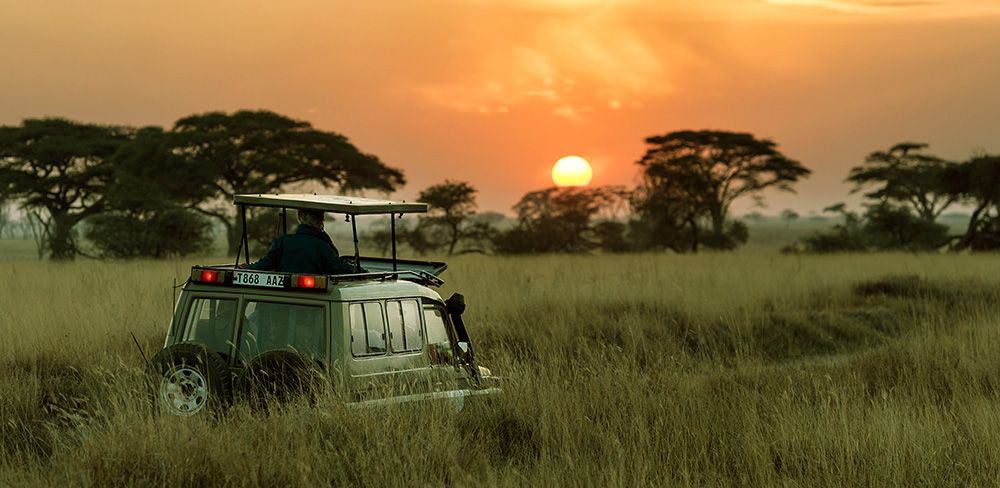
Ngorongoro
The Ngorongoro Conservation Area is a protected area in the highlands bordering the Serengeti. The area is named after the by many famous Ngorongoro crater, the largest volcanic caldera in the world that is still completely intact and not (completely) filled with water.
The crater is about 20 km wide, 600 meters deep and 300 km². An estimated 25,000 large mammals live on this relatively small area. This makes the area of the crater one of the most densely populated wildlife areas in the world. This breath-taking natural wonder has been on the UNESCO World Heritage List since 1979 for good reason.
Highlights of the Ngorongoro crater
Apart from the phenomenal view from the crater rim on the large plain in the depths, we found the high concentration of wildlife the greatest highlight of the Ngorongoro crater.
Here you will find the “Big 5” where we saw “only” four of them, namely buffalo, lions, elephants and even the black rhino. Unfortunately, the leopard didn’t show up. Next to the Big 5 live hippos, lots of zebras, gazelles, wildebeests and waterbucks, cheetahs and hyenas. Against the crater slope we also saw many monkeys.
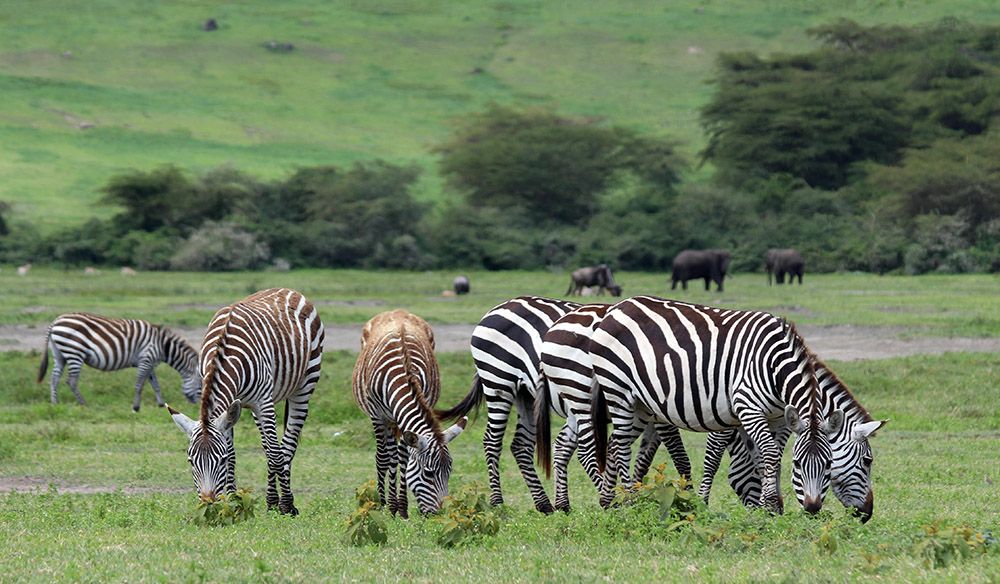
Practical things for a safari at Ngorongoro
Best time to visit the Ngorongoro crater
The Ngorongoro crater is interesting to visit all year round. In the rainy season from November to April the landscape is at its most beautiful. The only disadvantage of that period is that the grass is so high that even your guide has trouble spotting special animals for you. In addition, it can get muddy and some roads are not passable anymore. Not even for the highest safari cars.
Self-drive or organized?
We did a self-drive with our simple 4WD rental car. In hindsight that wasn’t very convenient. First of all, because of the costs. You pay over $70 per person per day entrance plus $295 per day to drive your own vehicle across the crater plain.
Next to that you are obliged to go with a guide. We only found out dozens of kilometres after the main entrance when we wanted to take the mountain work from the crater rim to the crater. Luckily there was still a guide available at the barrier who could ride with us. By the way, a guide is nice because he can tell you a lot about the park and the wildlife that lives there. They also know how to spot the game better than you do.
Despite the fact that it hadn’t rained for several weeks, we regularly fell into the mud with our rental car. Even the often-high boulders were sometimes a problem on the bumpy, winding road. For this reason alone, we would like to go on an organised safari next time.
If you book an organised safari, we advise you to do it in combination with other wildlife parks such as the Serengeti and the Tarangire National Park. This is also because we think you can see the Ngorongoro crater in just one day.
On the website of safaribookings.com you will find dozens of competitively priced tours varying from 2-day tours to safaris of a week or even longer.
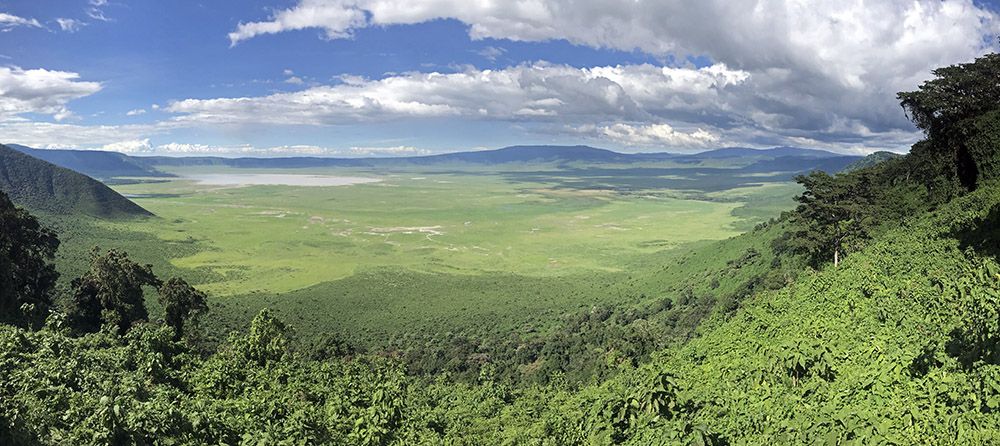
Tarangire National Park
Of all the parks we visited in Tanzania we found the landscape of Tarangire National Park by far the most beautiful. Think of a sloping landscape full of Baobab’s, elephants and giraffes. And now and then with beautiful views of the winding Tarangire river where the park is named after. The approximately 2,850 km² park is the 5th largest national park in Tanzania.
Highlights of Tarangire National Park
The biggest highlight of the Tarangire National Park is the Tarangire River because this is where most of the animals gather, at least in the dry season. The river is the main lifeline for the animals. When we were there in January, we saw a large herd of at least a hundred elephants crossing the then wide river. What a beautiful sight!
Next to the large numbers of savannah elephants the park is known for the migrating wildebeest and zebras that migrate to the river in the dry season. Other animals you can find in the park are gazelles, giraffes, impalas, kudu, kaffir buffaloes, lions and antelopes. There are also pythons and even hyenas and cheetahs.
Due to the dense vegetation in the rainy season, the most important predators such as lions and leopards are unfortunately not always clearly visible. If you want to see lions during this period, it is best to swerve to the Serengeti or the Ngorongoro crater. And as mentioned before, the more than 550 bird species, with names during our winter, are a highlight of the park.
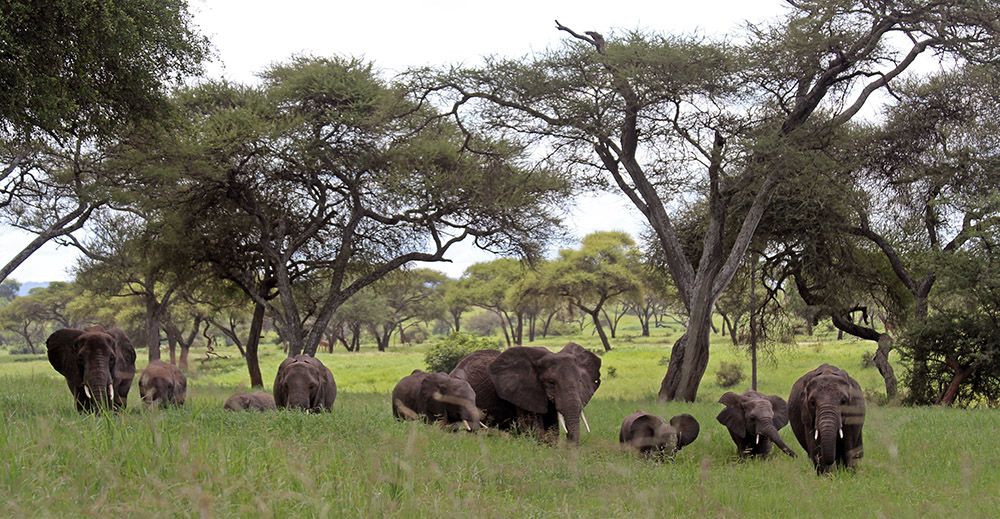
Practical things for a safari in Tarangire
Best time to visit Tarangire National Park
In general, the dry season from June to October is the best time to visit the park. Not only is the weather sunnier and less hot than in our winter, but because of the drought the Tarangire river has a much higher concentration of wildlife. An additional advantage of the dry season is that there are fewer mosquitoes.
We were there at the beginning of January, a relatively dry month in the rainy season. A big advantage of this period is that the park does look beautiful green. Also, for birdwatchers the months January and February are good months to visit the park because of the many migratory birds. In addition, this period is a pleasant period because there are fewer tourists and therefore the prices are lower.
Accommodation
Although we stayed outside the park ourselves, there are many excellent accommodations in the park, including several safari lodges and tent camps. The big advantage of staying in the park is that you can pick the most beautiful moments of the day to admire the wildlife up close. For example, the animals come to the river early in the morning to quench their thirst. But whether or not you’re going to spend the night in the park, visit the Tarangire Safari Lodge anyway for a truly fantastic view of the park and the Tarangire River.
Entrance
If you are visiting Tarangire National Park on your own with a 4WD rental car, it is best to take the main entrance in the northwest of the park. The park opens at 6.00 am and closes at 6.30 pm. The entrance costs 53 dollars per person per day, to be paid by credit card at the entrance of the park. At the entrance you can also book a walking safari for around 24 dollars per person. Please note: there will not be a guide with you but a security guard.
Safaris
If you want to book an organised safari, we advise you to do Tarangire in combination with the Serengeti and Ngorongoro. On the website of safaribookings.com you will find hundreds of often competitively priced tours.
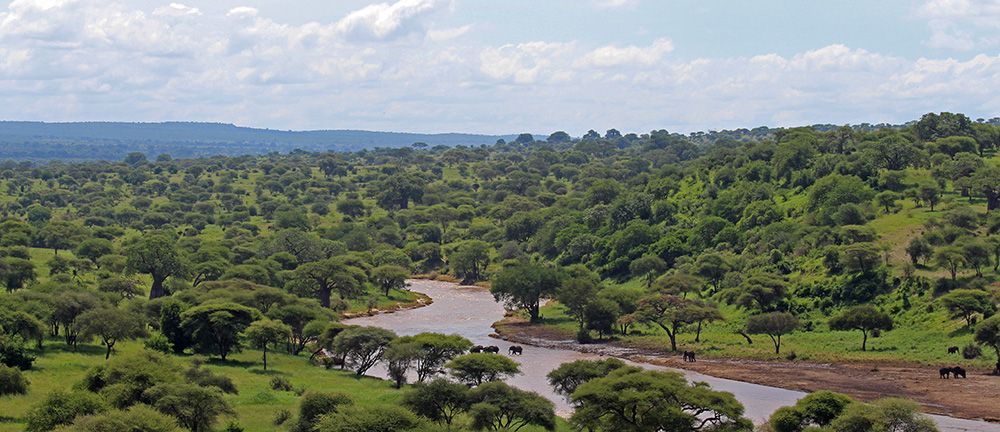
Ruaha National Park
Ruaha National Park is a particularly impressive natural park with an abundance of wildlife. The park is known for its very large elephant and giraffe population and is often called ‘Giraffic Park’. With an area of 10,300 km², Ruaha is the second largest national park in Tanzania after the Selous Game Reserve and the Serengeti.
Another big plus is that, due to its ‘remote’ location in the south of Tanzania, there are far fewer tourists than in the parks in the north.
Highlights of Ruaha National Park
The main highlight of Ruaha National Park is that you can spot predators. The park also has possibly the highest concentration of elephants of any national park in East Africa. Ruaha is also the only park where you can see the big kudu, a very large species of antelope with a rather long neck that is very popular among poachers.
Besides elephants, giraffes and large and small kudu, you will find sable antelopes, lions, leopards, cheetahs, hippos, crocodiles, zebras, impalas and jackals. The park is also a habitat for the endangered African wild dog. And with more than 570 bird species, the bird lover will also find plenty to enjoy here.
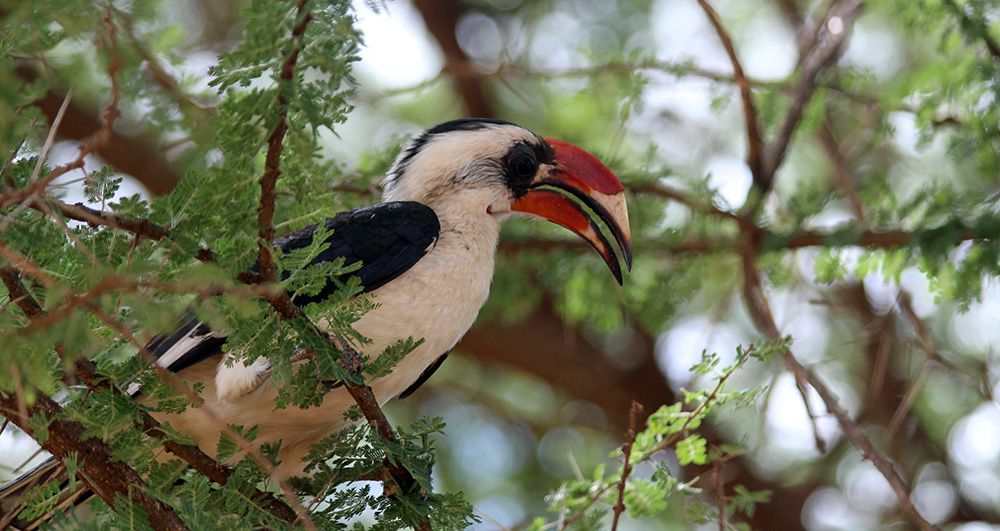
Practical things for a safari in Ruaha National Park
Best time to visit Ruaha National Park
The best time to see predators and large mammals is during the dry season from the end of May to December. The animals then gather at the sparse drinking water of the river.
If you come for the many bird species, the lush green landscapes and/or wild flowers, you should be there during the rainy season from January to April. In June the males under the big kudu show themselves the most because this is the month to mate.
Self-drive or an organised safari?
There are many opportunities to visit Ruaha National Park. So, you can take your own rental car into the park from Iringa. You pay 30 dollars per person plus a relatively small amount for your car. We advise you to hire a guide because he or she can help you spot the wildlife. However, also because he knows the park well and can tell you something about the park and the animals.
Another option is to rent a 4WD including driver in Iringa. This costs around 120 dollars a day. The big advantage is that the driver, just like the guide, knows the park very well and knows how to spot the game. In addition, you can focus very comfortably on photographing the wildlife and the beautiful landscape.
And of course, you can also just book an organised safari. Ruaha is such a beautiful park and has so much to offer that you can easily stay here for two full days. There are safaris in which you only visit the Ruaha National Park, but there are also many that combine several wildlife parks in the south. We advise you to book a combination with at least the Selous Game Reserve.
On the website of safaribookings.com you will find dozens of competitively priced tours varying from 2-day tours to safaris of a week or even longer.
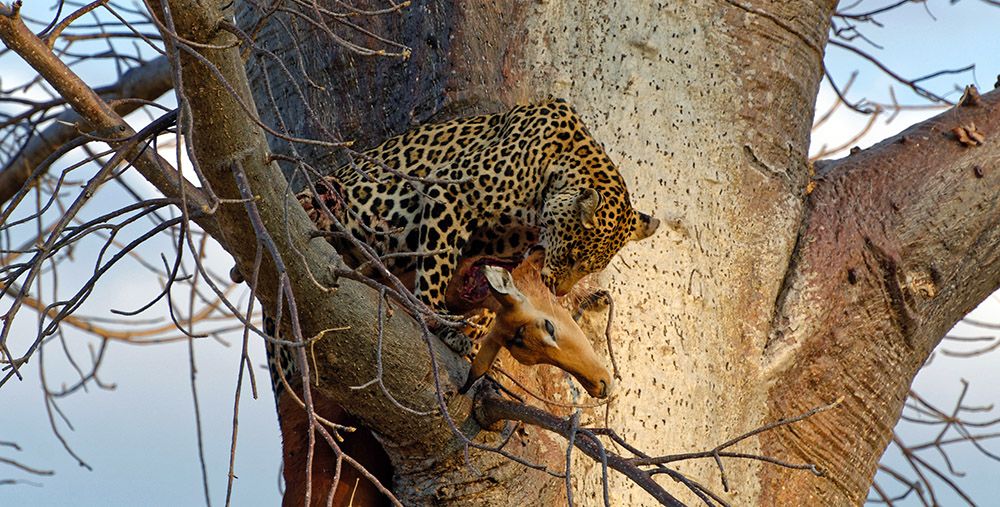
Selous Game Reserve
The Selous Game Reserve in the south of Tanzania is one of the largest game reserves in the world with over 51,000 km². Most of the reserve is dedicated to hunting. Permits are very expensive.
The smallest, northern part of the reserve is open to the public and is definitely worth a visit! As in Ruaha National Park, you can spot excellent predators here. In addition, the reserve is one of the few parks where you can also take a safari on foot. There are also excellent boat safaris on the Rufiji River. Near this river there are large swampy areas where it is teeming with crocodiles.
Highlights of Selous Game Reserve
The Selous Game Reserve is the only park next to the Ngorongoro Conservation Area where you have rhinos. Besides rhinos and crocodiles, you’ll find elephants, hippos, lions, various species of wildebeest, sable antelopes, kudu, water and reedbucks, hartebeests, zebras, giraffes, warthogs, spotted hyenas, leopards and huge buffalo. And just like in Ruaha National Park you will encounter the endangered African wild dog.
What makes the Selous Game Reserve so special apart from the animals is the truly beautiful landscape north of the Rufiji River with relatively many trees. The Rufiji is one of the largest rivers in Africa. Along the river you will find many tributaries with palm trees and swampy islands. In the reserve there are no large plains like the savannah in the Serengeti.
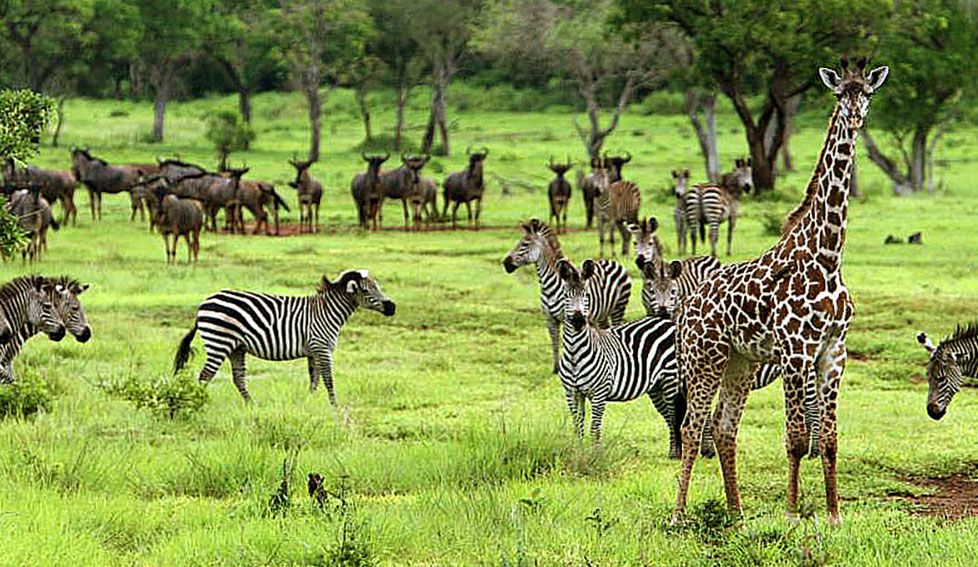
Practical things for a safari in Selous
Best time to visit the Selous Game Reserve
As in most other parks in East Africa, the period from June to October is the best time to visit the Selous Game Reserve. The game is then much easier to spot because most animals migrate to the places near the water. It is also because the vegetation becomes thinner. Incidentally, this is the high season so you will encounter more tourists, and the prices are higher. In March and April, a lot of the accommodation in the reserve is closed.
Safaris
As the Selous Game Reserve has excellent walking and boat safaris, it’s best just to book one of the many possible safaris. Then go for a safari of at least 3 or 4 days in which you go on safari by jeep, on foot or by boat. Combinations with other wildlife parks are also possible. On the safaribookings.com website you will find dozens of competitively priced options.

